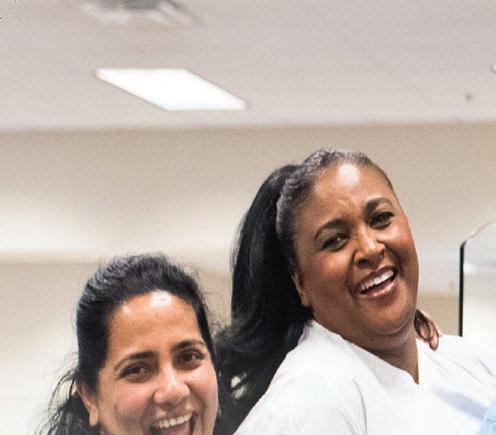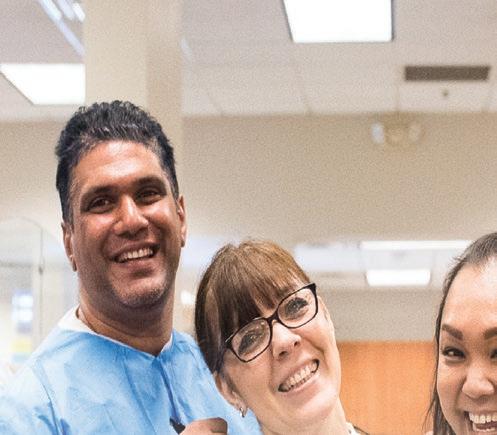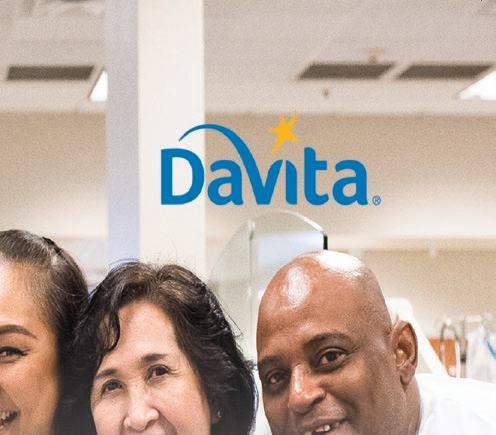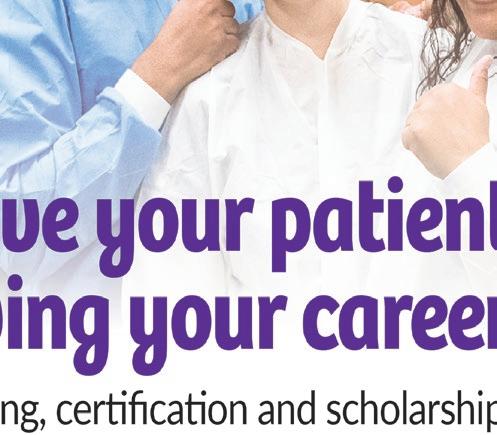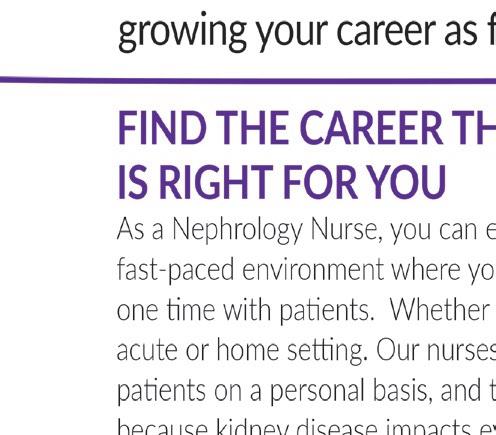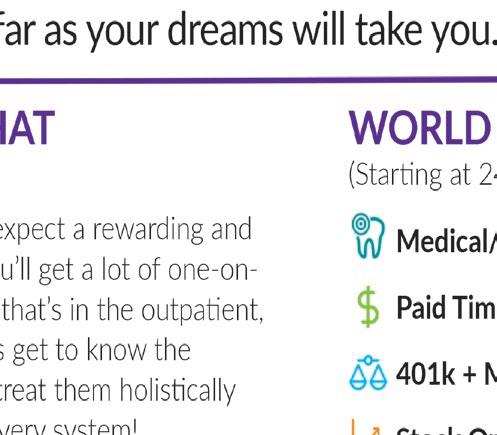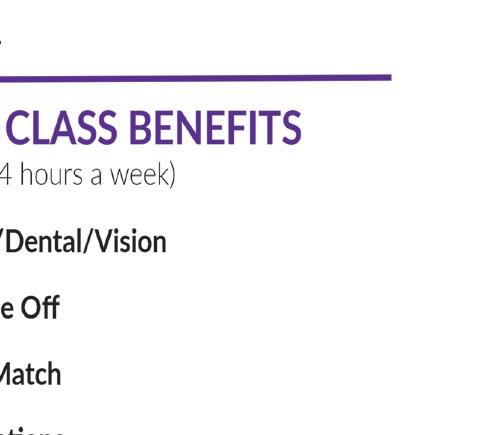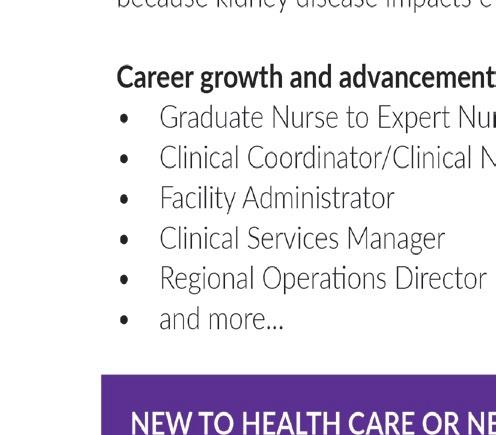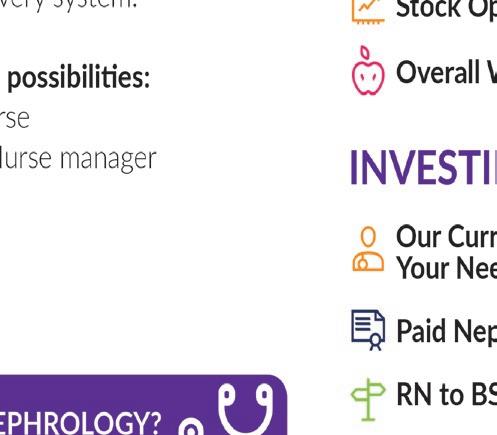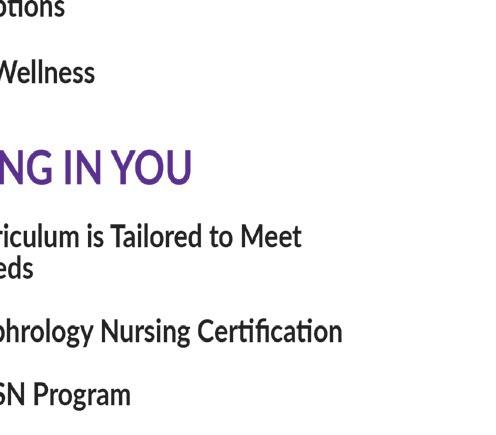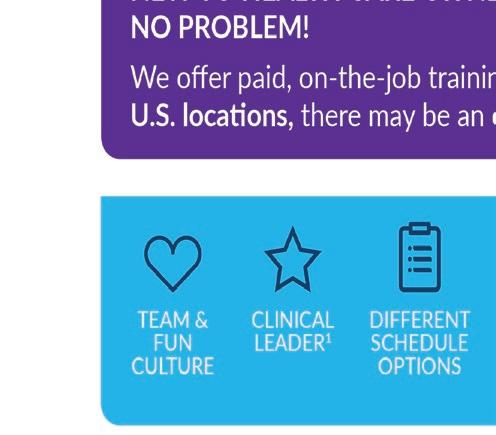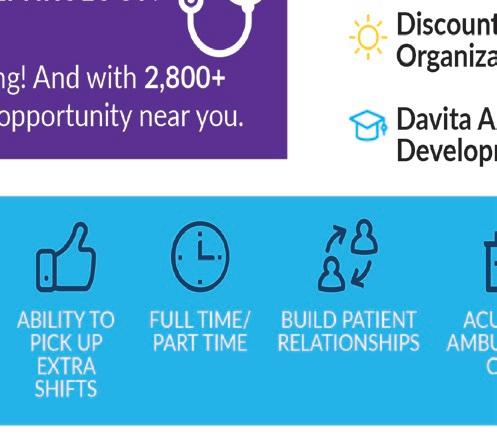










brother Jym. She graduated from East Juniata High School. Today, she lives in Mifflintown. She has two adult children and two grandsons.
But history cannot erase the events of a Saturday just over four years ago.
TOM LAUB Lifestyles editortlaub@lewistownsentinel.com
MIFFLINTOWN — The painful and emotional passing of a loved one can last a lifetime for those left behind. It can incite a downward spiral or empower an individual with the strength to carry on and help others.
For Shannon Zeiders, the loss of her brother inspired her to share her experience while assisting those who had suffered through similar trying times.
Zeiders has recently formed GRASP (Grief Recovery After a Substance Passing), a local support group for families and individuals experiencing bereavement due to a substance use related death. Her story began like many others but a family tragedy changed the direction and tone of future chapters. Zeiders grew up in Thompsontown with her parents, Sam and Kathy Brantner, and her younger
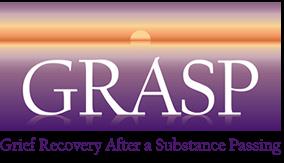
“I lost my brother Jym to an accidental drug overdose on December 8, 2018, he was 38,” Zeiders said. “He was a good person, he had a heart of gold, a passion for sports and music, and was a friend to many. The grief was overwhelming, made even worse by the stigma that surrounds drug addiction. It was horrific, we stumbled around in a fog for the first year or two. When someone dies of an overdose, people don’t know how to respond. You feel very alone. I looked online for support groups for people that have lost someone to addiction and thankfully I found GRASP. Finding the group was a lifeline for me. It provided a safe place for me to connect with others suffering through the same type of loss.”
The loss itself was heartbreaking. The stigma added to the pain. The strength came from within.
“I started this group to bring the compassion, support and understanding that GRASP provides to this area,”
See Loss / Page 4
Index of Advertisers
Laresa Padem walks on the treadmill and Frank Prisk lifts weights
Sentinel Photos by Savanna Wolfe
Continued from Page 3
Zeiders said. “I attended the group in Harrisburg. It was well worth the drive for me, but I feel this group is needed in our area. Losing someone to addiction is one of the most traumatic tragedies which, no doubt, has been preceded by weeks, months even years of heart-breaking turmoil. I want to share my experience, offer compassion and support to others grieving the loss of their loved one. I want people to know they are not alone. So, in the fall of 2022, I reached out to the GRASP headquarters and was given permission to start the Central PA chapter.”
The local chapter is just getting started, but in time, Zeiders hopes the network will grow and reach as many as possible.
“This group is for those who have lost someone they love to a substance-related death,” she said. “Whether its alcohol, street drugs or prescriptions. My goal is to provide a safe non-judgmental space so that people grieving the loss of a loved one may share their feelings, their experiences, their support for each other and their love for those who have passed away. Being able to share your grief in all its forms with others in similar circumstances can provide comfort, lighten the burden, and help the healing process.”
Dealing with the loss of a loved one is always difficult, but sharing similar feelings resulting from the circumstances can help the healing process.
“We are a community of those who have lost a loved one to addiction and we understand,” Zeiders said. “We understand the isolation, the stigma, the special kind of pain that accompanies this loss. We are here. We are walking the same path. Take our hand and we will walk together.”
Central Pennsylvania GRASP is a chapter of the GRASP organization, an international non-profit with over 100 face-to-face peer-led support groups across the United States, Canada, and the United Kingdom.

The local chapter meets on the second Monday of every month from 7-9 p.m. at the CPYM Sausman Center, 12339 William Penn Hwy. in Thompsontown. There is no charge to attend but pre-registration is required.
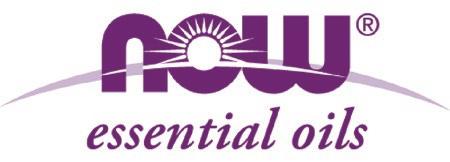

Zeiders is available by phone or email to communicate with people who are grieving a substance passing and need support. For more information or to pre-register, contact Shannon Zeiders at (717) 953-6810, cpagrasp@yahoo.com, or visit www. grasphelp.org


news@lewistownsentinel.com
LEWISTOWN — We’ve often heard going to the gym can be beneficial. However, creating that determination comes with plenty of challenges.
Yes, people want to feel better about themselves physically, but going to the gym can also be about leaping over mental hurdles, such as feeling self-conscious or finding inner strength to overcome a number of reps.
Anne Maisonable, general manager at Anytime Fitness in Burnham, wants people to feel comfortable when focusing on their fitness goals.
“I want people to know that they’re not going to get judged. A lot of people come in and feel like ‘people are going to look at me’ or ‘I’m not really familiar with how to use the equipment.’ But, we do have trainers that come in. A personal trainer will go over health goals and give them a workout plan,” Maisonable said. “No one is going to judge you when you come in here. It’s super friendly. People love to work out, mind their business and do their own thing. But, at the same time, they want to help you, especially if they see you struggling and are not really sure how to use the equipment.”
According to an article published by Workout Anytime in August 2022, the International Health, Racquet and Sports Club Association found that 66 million Americans are members at a health club.
Lewistown area residents have expressed a desire to see the scales tip in the opposite direction.
“Their first goal is definitely weight loss. I do have members that come
in and they want to focus on toning. For the most part, the older crowd wants to focus on strength. They’re getting older and don’t want to be in a wheelchair or a walker, so they basically want to focus on endurance and strength. It’s between building strength, weight loss and toning,” Maisonable explained.
“We’ve seen a lot of clients who have seen drastic transformations. One client that was working started at 300 pounds and now he’s at 240. So, if you’re consistent, are able to be coachable and follow what the trainer is saying, then you’re definitely going to see results.”
For some people, it can be hard knowing where to begin their fitness journey. Maisonable offered a simple solution whenever someone has the urge to work out.
“As soon as you have that thought, ‘hey, I want to join a gym.’ Either call immediately or automatically just come. It’s a mindset shift. If you really want to change your life and have a new lifestyle, just get started,” Maisonable said.
For over a year, Maisonable has been a physical trainer. She’s found it crucial to help people overcome fitness obstacles by supporting them on an emotional level.
“If someone hits a wall, I usually reach out to them and find out what’s going on. I always try to bring them back to why they started, just have a conversation and see what’s going on. That usually helps out, just having a heart-to-heart and not even talking about fitness or working out,” Maisonable said.
Like Maisonable, Sarah King is also a knowledgeable fitness guru in the
Continued from Page 4 area. King echoes Maisonable’s sentiments on maintaining a healthy and active lifestyle. King has been the gym manager at M.R. Stax, located in Lewistown, since June 2022 and holds her bachelor’s degree in sports management.
Whether one is trying to lose weight, build muscle, or simply live a healthier, well-balanced lifestyle, it is no secret that personal health and fitness goals are worthwhile.
Despite how daunting the initial steps are, it is undoubtedly a way of life that thanks you. It’s not only about your present health, but about how you want to view yourself years down the road.
A noticeable shift has occurred in recent years that has paved the way of showcasing, in a more positive manner, a healthier, more active way of life. Fitness influencers have specifically utilized their online platforms to showcase that taking care of yourself in both diet and fitness is not only healthy, but it can be enjoyable. That in itself is something worth celebrating.
Take it from the medical professionals. According to Geisinger, by eating healthier and losing weight, you can decrease your risk of stroke, ease back and joint pain, lower your blood pressure and cholesterol, move more easily, reverse the course of heart disease and Type 2 diabetes, and improve the quality of your sleep. These are just a few of the benefits when you begin focusing on your goals and cultivating a more positive relationship with your body.
See Roadblocks / Page 8

Residents at Celebration Villa receive the right care services that will serve their overall wellness.

• Care staff on-site 24/7
• Personal assistance with activities of daily living

• Medical assistance
• Mobility assistance
• Continence maintenance
• Long-term and Short-term Respite Care
At Celebration Villa, you may choose to remain with your current doctor or see any of our physicians that include:

• On-site or telehealth doctors
• On-site rehabilitation therapy

Continued from Page 8
Certainly, going to the gym, especially when it’s a new hobby, can be an unnerving venture.
King understands this fear amongst new gym-goers. She empathizes, “In my opinion, I believe the main reason people come to M.R. Stax is for general health and wellness. But I think people don’t want to go to the gym in the first place because they’re scared, nervous, or intimidated, especially if they’re brand new to fitness and just starting their journey. It can be a scary place if you’re not quite sure what to do or how to operate the equipment.”
For beginners, patience and consistency may be the most arduous feat of all. Showing up for yourself and having willpower is not a cake walk, especially when you’re navigating a lifestyle shift. In order to aid others in combating their gym fear, King offers motivation by providing thoughtful, uplifting quotes on a whiteboard hanging at M.R. Stax, supporting her fellow gym-goers to power through even their most laborious of workouts.
“I think having just a little pickme-up whether you read it before or during your workout is a nice way to keep the members in a positive mindset while they’re here,” said King.
She added, “However, my motivational advice for beginners would be to set simple goals for yourself and make any kind of physical fitness part of your everyday routine. Be motivated by your goals.”
Going through a fitness journey alone can feel isolating at times. The saying, ‘two is better than one,’ rings true. Having a community of people rallying around and supporting you is helpful with self-accountability, but
having a friendly face close by and someone offering a kind pat on the back when it is most needed is something many beginners long for in the gym.
“When it comes to motivation (within the gym), I think the members do a good job at being each other’s motivators whether they are trying to be or not. There are a ton of great and amazing people that come here that always have a smile on their face and a positive outlook. It’s very refreshing and I think people can see that and feed off of them,” King noted.
Starting a fitness journey is a lot like life. There are good and bad days. King understands how discouraged people can feel when they give it their all throughout their workouts and do not feel as if they are seeing the fruits of their labor. Routines can become mundane after doing them for an extended period of time. In fact, research shows that a vast majority of health clubs and gyms lose 50% of their new members within the first six months, so do not feel discouraged or like a failure if you feel bound to give it up.
For those who feel as if they have hit a plateau in their fitness journey, King shared a solution.
“Switch up your routine completely. Go outside your comfort zone,” she suggested.
There are a plethora of ways to become more active. Taking the family dog for a walk, running the track, pilates, yoga, weight training, CrossFit and much more. Find what feels good for you and your body and show up as the best version of you every day! Take care of yourself and happy training.


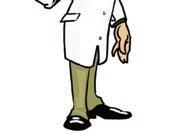
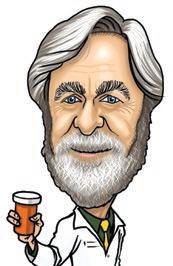
Your child can expect a newborn hearing screening, typically completed before leaving the hospital or within the first month. Routine hearing screenings are then completed in school at the following grade levels: kindergarten, first, second, third, seventh, and eleventh grade.
A failed hearing screening is followed by a secondary hearing screening at the pediatrician or a visit with an audiologist.
In addition to a visual examination of the ear and ear canal, an audiologist may complete the following:
Tympanometry- this test evaluates the eardrum movement. It allows the audiologist to



see if there may be anything behind the eardrum contributing to the failed hearing screening.





Distortion Product Otoacoustic Emission Testing (OAEs) - This test evaluates the hair cell motility in the hearing organ (cochlea). This test is automated, allowing the audiologist to effectively detect hearing loss without a response from the child.
Audiometric Evaluation

Depending on the age of the child, different methods of testing are used.
Behavioral Observations - Typically completed on children between birth and 6 months of age. This test watches for changes in behavior in response to certain sounds. Observed changes in their behavior can include changes in sucking a pacifier, quieting, or searching for the sound.
Visual Reinforcement Audiometry (VRA)- Typically completed with children 6 months to 2 years of age. VRA requires the child to have neck and head move-


See Hearing / Page 11

Continued from Page 10
ment. This type of testing is typically completed with the use of speakers instead ofb headphones. The child is conditioned to look toward the sound source. When the correct response is given, the child is rewarded through visual stimulation, typically a toy or flashing light.
Play Audiometry- Typically completed with children 2 years to 5 years of age. This test relies on a child’s cooperation. The child will often wear headphones. When the stimuli is presented to the child, the child is asked to complete a task, typically with a toy, or highfives. This type of testing is turned into a game for young children to keep their attention while testing.
Pure Tone Audiometry- Typically completed on any child above the age of 5. For this test, the child wears headphones. A tone is then presented, and the child must respond by raising their hand.


Speech Audiometry- This subset of




tests allow audiologists to test speech awareness, speech detection and speech discrimination abilities. These tests can be completed using speakers or headphones. The use of headphones allows testing of each ear individually.

If a hearing loss is identified, your child should be seen by an Ear, Nose, and Throat (ENT) Doctor to rule out any medical contraindications of the hearing loss. A medical clearance by the ENT is required prior to the fit and use of hearing aids for children. Hearing loss can affect a child’s ability to develop communication, language, and social skills. The earlier children with hearing loss are identified and start receiving services or using hearing aids, the more likely they are to reach their full potential.

A Table is made up of 4 legs. The table can still function with one leg missing. With two legs missing, it will still be upright but it will need support to keep it from falling. With three legs missing, it will just fall over. Support will help but it will be very tough. However, with the top missing that connects all four legs together, there is no hope of any of them being able to stand upright.
This is the table of Good Health.
Each leg is a different aspect of your life that you can do to achieve wellness and good health. The legs are as follows: Proper Diet, Adequate Sleep/ Rest, Positive Mental Attitude, and Proper Exercise.
The top of the table, that binds everything together, is our nervous system.
Proper Diet means putting the right things into your body and not putting the wrong things in your body. You want to focus on eating the foods, you know, that do your body good, such as fresh fruits and vegetables. Green, leafy vegetables have many of the necessary vitamins and nutrients that your body needs to help build cells, repair damaged cells and strengthen your body. You want to make sure that you stick to the food groups. Consume the right things and not consume too much of the bad things, such as fats and sweets that are often empty calories providing no nutritional value to your body. Proper nutrition means that you also need to drink enough water. Water is a huge part of what I teach my patients to consume. Your body is made up of 70% water. It is necessary for your organs and for your blood. Your body wants to maintain constant levels, such as your temperature is usually around 98.6∞F,
your heart rate is usually 60-90 beats per minute, your breathing rate tends to be around 20 breaths per minute, your blood pressure should be close to 120/80, and your body wants to maintain constant levels of hydration. It’s when you drink things that are diuretics, such as coffee, tea (hot or iced), and beer that makes your body get rid of its water that dehydrates your body. When your body lacks water, what does it do? It takes the water out of your muscles. Then, as a result, when your muscles get dehydrated, you get tight muscles, charlie-horses, trigger points and muscle spasms. A good rule of thumb is to drink half of your body weight in ounces of water per day. If you start in the morning, you won’t be up all night urinating. Another part of nutrition is to add a multi-vitamin to your diet because you probably will not be able to get all the daily vitamins and minerals that you need from the foods that you eat. You need to find a good multi-vitamin that is not full of fillers, but is actually full of the necessary vitamins and minerals. A chewable or gummy vitamin works best because the digestion process starts in the mouth with chewing. Pills that get swallowed whole may pass through your digestive system without being digested.
The next leg is Proper Sleep and Rest. It is very important for your body to get 6-8 hours of good quality sleep each night. Getting proper rest and sleep enables your body to properly repair itself and build the cells that it needs from eating the foods. In the past, during World War I, World War II, and the Vietnam War, the prisoners of war would be deprived of sleep as a way of torture to get them to confess secrets to the other side. By depriving
See Table / Page 13





Continued from Page 13
them of sleep, they could get a person to change his whole way of thinking. Your body needs the proper amount of sleep for you to be healthy. If you snore during your sleeping hours, there is a good chance that you stop breathing, also. If someone sleeps with you, ask that person to verify if you do this. A sleep study is a great way to determine if you have sleep apnea, which is the condition of stopping breathing while sleeping. The lack of oxygen in your bloodstream from the lungs during sleep apnea causes your heart to work harder to circulate the blood to all areas of the body that depend on that oxygen, which is everywhere, especially the brain. When I had this test, I stopped breathing 31 times per hour (every other minute) and that was mild to moderate sleep apnea. Making your heart work harder
can lead to heart issues in the future. I highly recommend getting examined by your medical doctor if you snore or stop breathing during your sleep times.






The next leg is Positive Mental Attitude. This is a big one that not a lot of people think about. How many of you have heard of the saying that you are only as old as you feel? If you have a negative attitude about your life and about your health, not only will you get depressed and make yourself feel worse, but you will also be lonely because people who are negative aren’t exactly the best kind of people to be around. Nobody wants to be around someone who always views the glass as half empty. It is the people who are optimistic and happy-go-lucky that seem to be the happiest and the healthiest. If you feel that you have issues in this area or feel depressed, I encourage you to talk to someone
See Table / Page 15


Continued from Page 14
such as a counselor, a therapist, a pastor, or a professional. I have always favored this quote, “your attitude, more than your aptitude, determines your altitude in life.”
The final leg is for you to keep moving and make sure that you get the proper amount of exercise that your body needs. Exercising releases endorphins in your body. Endorphins are chemicals in your body that helps you feel better about yourself. One of the best ways to improve your mental attitude is to start exercising or at least get your body moving in some way. If you have ever seen Richard Simmons who did “Sweating to the Oldies”, the first thing he does is to get people moving in some way. If they cannot stand up, he has them doing aerobics with their arms. Getting the body moving releases these endorphins and helps break them out
of that mental funk which causes depression and usually leads them to consuming more bad foods. Doing weight-bearing exercises helps your body from developing osteoporosis which is brittle bones. Have you ever heard of the saying, “If you don’t use it, you lose it.”? What didn’t they have up in space? One of the best ways for you to keep from getting osteoporosis or to help prevent it from worsening is to increase your weight-bearing exercises and keep your body moving, which also helps to get the blood flowing in your body. Lack of movement leads to poor circulation. Moving also helps to prevent arthritis. By keeping the proper motion between the bones that make up a joint, arthritis can not settle in as easily. So, get moving!!!
All of these legs will not stand without the top of the table being in place. The top of the table is the nervous system of your body. Every single organ, muscle, bone, blood vessel, gland, and every part of your skin is controlled
See Table / Page 16

Continued from Page 14
by your brain. Anything you put into your mouth depends on your digestive system and your circulatory system. The blood carries that nutrients from the foods you consume to all areas of the body. If your aiding your immune system by consuming items to boost it such as Vitamin C, Vitamin D, Zinc, Elderberry, and Echinacea, those two systems are needed to boost the immune system. All systems are controlled by your brain and your nervous system, which includes the spinal cord and the nerves which all come off of the spinal cord. The most important part of the body is the brain due to its function of controlling everything in your body. In order to control everything, it has to be connected to everything via the spinal cord and the nerves. The skull’s job is to protect the brain. The spine’s job is to protect the spinal cord. Your spine has to not only protect the cord, but also enable your body to bend, twist, turn, and move. Your spine is made up of vertebrae that stack on top of one another being separated by a disc for cushion, shock absorption, and spacing. The muscle in the back (which from the skin to the spine are 5 layers deep like an onion and attach to the vertebrae via tendons) enable each vertebra to move. Sometimes, these movements we make are not in good directions and are usually due to stress. Every time we get stressed, we tend to tighten these back muscles, whose jobs are to contract and relax to move the bones. The stress tightens the muscles, the muscles pull tensions on the bones and the bones (vertebrae) get pulled out of place (misalign) and then put pressure on the nerves that exit from the spinal cord and travel between the bones of the spine (vertebrae). These misalignments are called
subluxations and they cause interference between the brain and the body and the body and the brain by putting pressure on these spinal nerves. This is what we do as chiropractors: locate and correct these subluxations.
---
Dr. Kauffman is a chiropractor with Kauffman-Hummel Chiropractic. Find out more at www.assistinginnate.com or call the office at 717-2482506.
Suffering with behavioral health challenges, can sometimes seem overwhelming. But Beacon Light can offer help and hope.



Beacon Light offers a full-range of behavioral health services for adults and children. We have locations in McClure and across PA!
WE’RE ALSO HIRING! FOR MORE INFORMATION ABOUT US, VISIT www.beacon-light.org


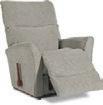

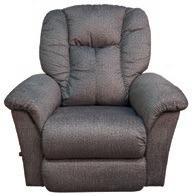



Did you know one in seven adults in the U.S. has kidney disease? Chronic kidney disease (CKD) happens when kidneys are no longer able to clean toxins and waste product from the blood, and cannot function at full capacity. This can happen suddenly or over time. The good news is there are many ways to help delay kidney failure, especially when CKD is diagnosed in the earlier stages. If you’ve been diagnosed with early stage CKD, use the five tips below and talk with a nephrologist (kidney doctor) for advice on how to

slow its progression.


1. Control your blood pressure. Keeping your blood pressure within a healthy range may help slow the progression of kidney disease. This is especially true in people who have diabetes and protein in the urine (proteinuria). Lifestyle changes such as maintaining a healthy weight, exercising, meditating, consuming less salt and alcohol, and quitting smoking may help lower your blood pressure. If you’ve been diagnosed with hypertension, your doctor may prescribe blood pressure medicine for you
See Kidney / Page 18
Continued from Page 17
to incorporate into your routine in addition to making lifestyle changes.
2. Monitor your blood glucose.
If you have diabetes, controlling your blood glucose levels may help slow the progression of kidney disease. Adopt a diabetes- and kidney-friendly diet, and follow your doctor’s instructions when it comes to diet, insulin or other medications.
3. Eat a kidney-friendly diet and exercise regularly.
You are what you eat! Following a kidney-friendly diet may help you slow the progression of kidney disease, especially one that is recommended specifically for you by a dietitian. Regular exercise and maintaining a healthy weight are also effective ways to help manage your disease progression. Talk to your doctor about incorporating exercise into your daily routine.
4. Use caution when taking over-the-counter supplements and medicines. If you’ve been diagnosed with CKD, talk to your doctor about the appropriate medication for you, even when it comes to over-the-counter medications and supplements.
5. Stay informed.
Visit DaVita.com to learn more about kidney disease and how to help slow the progression of CKD. You’ll also find free kidney diet tools such as kidney-friendly cook-
books, eating out guides, recipes, cooking videos and more.


DaVita Lewistown Dialysis Center is located at 611 Electric Ave. in Lewistown.
21
April 22

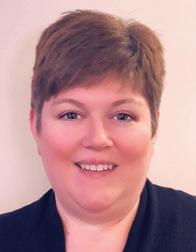

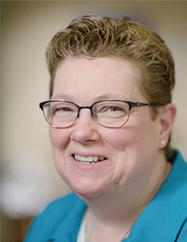
The Meadows Psychiatric Center is pleased to announce the appointment of Rod Kornrumpf, FACHE to Chief Executive Officer/Managing Director of The Meadows Psychiatric Center, effective earlier this month. In this role, Kornrumpf is responsible to provide oversight and direction to ensure the delivery of high-quality care and attention to those who entrust us with their psychiatric care and treatment.
Kornrumpf brings more than 20 years of behavioral health leadership and expertise to his new role. Prior to joining The Meadows Psychiatric Center, Kornrumpf served (under contract with Sheppard Pratt) as Vice President of the Be-
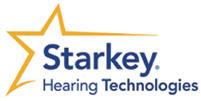

havioral Health Service Line for Luminis Health. In that role, he provided vision, direction, and oversight of a continuum of services that include Inpatient Hospital and Outpatient Mental Health Services; BH Walk-In Urgent Care; Psychiatric Day Treatment; Inpatient and Outpatient Substance Use Services; and Hospital-based Consultation Services. His other Behavioral Health Leadership roles include University of Maryland Upper Chesapeake Health, Christiana Care Health System in Delaware and for the State of Minnesota.

“It is an honor to join The Meadows team and continue to support the team’s commitment to the

See Meadows / Page 20

Continued from Page 19
communities we serve,” said Kornrumpf. “As behavioral health becomes more and more intertwined with physical health, as it should, The Meadows is uniquely positioned to continue to serve among the most vulnerable in our area with accessible, high quality, high compassion services.”


Kornrumpf is a graduate of Slippery Rock University in Pennsylvania and earned his Master’s in Healthcare Administration from Carnegie Mellon University in Pittsburgh. He is a Fellow with the American College of Health Executives. He has served as co-chair of the Prince George’s County Behavioral Health Advisory Group; member of the Behavioral Health
Task Force of the Maryland Hospital Association; and has served on the Board of Directors of Habitat for Humanity-Susquehanna and Chesapeake Health Education Programs.
The Meadows Psychiatric Center, a 119-bed private behavioral health care facility on a spacious 52-acre rural campus, is located minutes outside State College in Central Pennsylvania. As an integrated behavioral health care delivery system, The Meadows has provided comprehensive mental and behavioral health treatment services to children, adolescents, adults, and older adults since 1984.
-- or anywhere. To learn more about telehealth visit mountnittany.org/ telehealth.
To help you get the most out of your appointment, here are the top ten questions to bring up during your time in the exam room in person or virtually.
1. Can you review my medications and make sure I am taking them as prescribed?

Sometimes, the medications you”re taking may no longer be needed. Many medications treat symptoms only, and over time those symptoms can go away or alter on their own, independent of the medicine itself.
2. Does my family’s health put me at risk?
Doctors know to ask about your
See Wellness / Page 22







for opportunity??
wherever you are and create residual income. Work now and get paid for the rest of your life!

from

|

Continued from Page 21
family’s past illnesses during a first exam, but it’s likely that your family history has changed slightly since you’ve last seen your doctor. Update your doctor on recent health events concerning relatives, and ask if you are at risk for anything based on the new information.
3. Am I getting enough exercise?
Regular physical activity is important to overall health and wellness. Plus, exercise can help you control your weight, reduce your heart disease risk, and strengthen your bones and muscles. Generally, moderate physical activity such as brisk walking is safe for most people. But if it’s been a while since you’ve exercised and you have health issues or concerns, it’s a good idea to talk to your doctor before starting a new exercise routine.
4. How is my blood pressure?


Sometimes, if your blood pressure isn’t alarmingy high or low, the doctor won’t tell the exact number unless you ask. However, it can never hurt to get the exact number if you are worried about tracking it due to your family history or your own medical history.
5. Would you recommend any additional annual screenings?
As we all get older, it’s important to be proactive about our health. You may want to ask your doctor if he or she thinks that you should start any annual screenings, like a mammogram or colonoscopy, a bit sooner based on your family and medical history.
6. How is my weight?
Weight can be a very touchy subject, but it can affect your health in very serious ways. It’s important to have a non-judgemental discussion with your doctor if your are pushing the boundaries one way or another, and to talk about how you can get to the healthiest version of yourself.
7. What do I need to do between
now and my next visit?
Ultimately, your health is in your hands. You and your doctor should take the time to talk about what kinds of things you need to be doing in your daily life in order to stay healthy -from dietary choices to lifestyle decisions.
8. What important questions haven’t I asked?

Doctors are people, too, and they might be a bit forgetful. Sometimes they can forget to bring up a topic of discussion, and if you ask them if there is anything that you’ve missed, that little reminder won’t hurt.
To schedule your annual wellness visit (either as an in-person visit or a virtual visit via telehealth), call (844) 278-4600. Patients can also request an appointment online at mymountnittanyhealth.com.


Geisinger’s 65 Forward clinic in Reedsville offers those 65 and older. more time with their doctor and a team of healthcare experts all focused on the patient and access to wellness activities — all in a calm, relaxing environment that feels more like a spa than a clinic.
All the care a patient may need, from lab services to exercise classes, is located in one location. That means fewer appointments and less travel time for the patient.
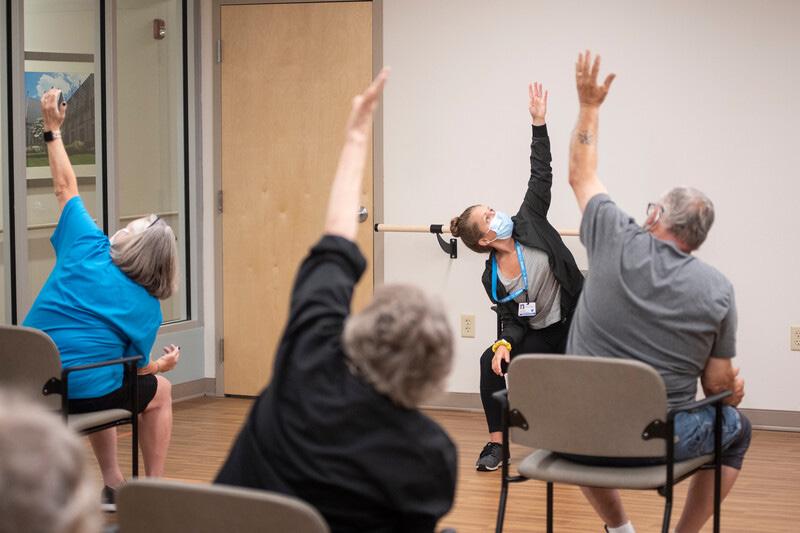
Services and classed at 65 Forward include:
• Lab services
• Radiology services
• Nutrition services
• Community support services
• Behavioral health services
• Pharmacy home delivery
• Specialty services
• Wellness center
- State-of-the-art fitness equipment
- Wellness coordinator
- Exercise classes, including yoga
• Educational programs, such as cooking and wellness
• Activities like arts and crafts, parties and events
• Senior-focused physician
• Wellness coordinator
The end result is more time spent with the patients and focusing on their needs. The Mifflin County location of Geisinger’s 65 Forward is located at 10 Gateway Dr., Reedsville and can be reached by calling 717-363-9310.
